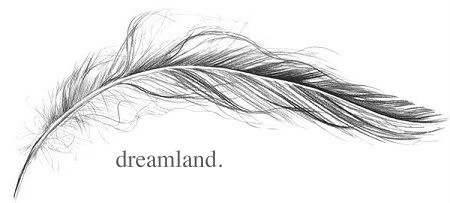 I can't sleep. I guess I'm on some sort of train of thought and I am nowhere near my destination, therefore, I cannot get off. So what do I do? Well, I get up, turn my lamp on and awaken my computer. Starting with signing on to the internet, I find my new favorite blog, get to the page I'm on, put some Bat For Lashes (pictured above) on my iTunes, and read where I left off. What will I do when I'm finished reading his blog? Let's hope another blog finds its way to me so I can keep learning and pushing forward in my quest for finding interesting people out there in the world. I think knowing them even in this small way makes me cooler. A little bit?
I can't sleep. I guess I'm on some sort of train of thought and I am nowhere near my destination, therefore, I cannot get off. So what do I do? Well, I get up, turn my lamp on and awaken my computer. Starting with signing on to the internet, I find my new favorite blog, get to the page I'm on, put some Bat For Lashes (pictured above) on my iTunes, and read where I left off. What will I do when I'm finished reading his blog? Let's hope another blog finds its way to me so I can keep learning and pushing forward in my quest for finding interesting people out there in the world. I think knowing them even in this small way makes me cooler. A little bit?
The Physiology of Human Development
Conception: Father’s sperm penetrates mother’s egg cell. Genetic instructions from both parents interact the being a new and uniqe individual who is no bigger than a grain of sugar.
Day 1: The first cell divides into two, the two into four, and so on.
Day 5-9: The new individual implants in the mother’s womb. The baby’s sex can already be determined.
Day 14: Mother’s normal menstrual period is suppressed by a hormone produced by her child.
Day 18: The heart is forming. Soon the eyes start to develop.
Day 20: The beginnings of the brain, spinal cord, and nervous system are laid.
Day 24: The heart begins to beat.
Day 28: Muscles are developing along the future spine.
Day 30: The child in utero has grown 10,000 times to 6-7mm (1/4 inch) long. The brain has human proportions. Blood flows in the veins and is separate from the mother’s blood supply.
Day 35: The pituitary gland in the brain is forming. Mouth, ears and nose are taking shape.
Day 40: The heart’s energy output is 20 percent of the adult output.
Day 42: The skeleton is formed. The brain coordinates movement of the muscles and organs. Reflex responses have begun. The penis has begun to form in male infants. The mother misses her second period.
Day 43 (1 1/2 months): Brain waves can be recorded.
Day 45: Spontaneous movements have begun, and the teeth are developing.
7 Weeks: Lips are sensitive to touch, and the ears may already be taking the family shape.
8 Weeks: The child is well-proportioned, a small-scale baby: 3cm (1 1/8 inches) sitting up, and a gram (1/30 oz) in weight. Every organ is present. The heart beats sturdily; the stomach produces digestive juices; the liver makes blood cells; the kidneys begin to function; the taste buds are forming.
8 1/2 Weeks: Fingerprints are being engraved. They will grow larger, but they are unique and will never change. The eyelids and palms of the hands are sensitive to touch.
9 Weeks: The child will bend fingers around an object placed in the palm. Thumb-sucking begins. Fingernails are forming.
10 Weeks: The body is sensitive to touch. The child squints, swallows, furrows his or her brow, and frowns.
11 Weeks: The baby urinates and makes complex facial expressions, even smiling.
12 Weeks: The baby is capable of vigorous activity. He or she can kick, turn feet, curl and fan toes, make a fist, move thumbs, bend wrists, turn the head, open the mouth, and press the lips tightly together. Breathing has begun.
13 Weeks (End of the First Trimester): The baby is prettier, and the facial expression resembles the parents’. Movements are graceful, reflexes vigorous. The vocal cords are formed, although without air the baby cannot cry. The sex organs are apparent.
4 Months: The baby can grasp with his or her hands, swim, and turn somersaults.
4-5 Months: The mother first feels the baby move.
5 Months: Sleeping habits are noticeable. A slammed door will result in activity. The child responds to sounds in frequencies too high of low for adults to hear.
6 Months (End of the Second Trimester): Fine hair grows on the eyebrows and head. Eyelash fringe appears. The baby’s weight is about 640 g (1 lb, 6oz), and height is 23 cm (9 inches). Babies born at this age have survived.
7 Months: Eyeteeth are present. Eyelids open and close. Eyes look around. Hands grip strongly. The mother’s voice is heard and recognized.
8 Months: Weight increases by 1 kg (over 2 lbs), and the baby’s quarters get very cramped.
9 Months: The child triggers labor, and birth occurs, usually 255-275 days after conception. Of the 45 generations of cell divisions before adulthood, 41 have taken place. Four more will come during the rest of childhood and adolescence.


1 comment:
its true. knowing you makes me way cooler.
Post a Comment